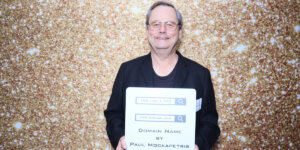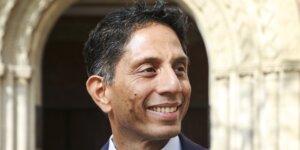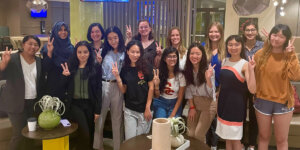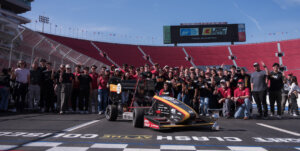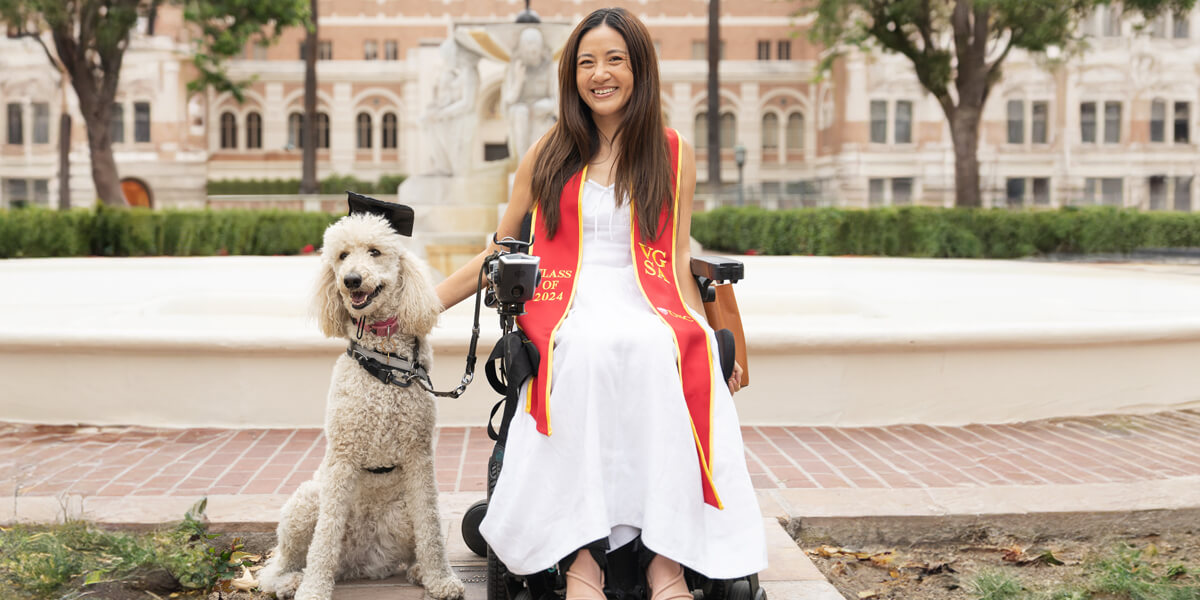
Natalie Fung and her dog, Roxy. Roxy likes the squirrels at USC and sleeping in class and dislikes fireworks and vegetables. Photo/Alexis Situ.
This is an as-told-to essay based on a conversation with Natalie Fung, a disability advocate and graduating master’s student in communication data science.
I was 21 years old when I broke my neck and became paralyzed from the chest down.
Up until this point, I had a relatively typical college experience. I was a student worker at USC Viterbi, I interned for a nonprofit that cleaned up beaches in Los Angeles, and I was about to start my first-ever paid internship for Nickelodeon.
During September 2013 — my last semester of college at USC as a public relations major — I went on a spontaneous weekend trip to Las Vegas with some of my friends. And on our way back to the hotel, a drunk driver hit our cab.
Life as I knew it changed.
After the accident, I had to get airlifted back home to LA. I wasn’t really moving at that point. I left school. Luckily, I had many supportive friends who helped me reach out to my professors, my jobs, and even my landlord, letting them know what had happened as I settled into my new normal.
I spent a month and a half at the Ranchos Los Amigos Rehabilitation Center doing inpatient rehab. I thought to myself, “There’s no way I would be able to go back to school.” Yet everyone at the rehab center was rooting for me, saying I could do it.
I finished my last three classes over Skype — before Zoom was a real thing — one semester at a time, in between physical and occupational therapy. In 2014, a year before I officially finished my degree, I got to attend commencement with my friends, which was bittersweet.
I looked for ways to get more involved in the disability community, eventually joining a wheelchair dance team called the Rollettes. I had never danced on a team before, but it was beautiful seeing how I could still dance in my wheelchair and meeting other young women with spinal cord injuries.
Before my injury, I didn’t know anyone else who had a disability.
I didn’t know what life would look like, and I didn’t know if I could ever live independently again. But a lot of the girls had been injured for longer than me, so they were able to show me many aspects of their lives that helped me see what I was capable of.
I feel like many people have an expectation of what their life should look like. I wanted to go to undergrad, get an internship, get a job, live on my own, do this, do that. Within these specific goals, having a disability just came out of nowhere.
I didn’t know if I could work; having a disability just wasn’t something I saw a lot of 10 years ago in the media beyond being a pity. Disability representation has grown much since then, although there’s still lots of room to improve.
After a while, I started working part-time for USC Viterbi, back where I was once a student worker, and it felt nice to have a purpose in life again. At that point, I didn’t know if I wanted to get back into public relations, so I looked at going to grad school.
Where do I go from here?
For a bit, I was looking at getting an MBA, but then I found out about the Communication Data Science joint program between USC Annenberg and USC Viterbi through Dean Yannis Yortsos. He said the program would line up well with my background in public relations and my interest in data science.
A lot of communication is very data-driven now, so I’ve really enjoyed learning the technical skills in the program but also brushing up on communication fundamentals that I learned before.
Learning coding languages seemed daunting at first, especially coming from a non-technical field and being surrounded by people who have done this for far longer than me. These skills are increasing in demand at companies I’ve interacted with at career fairs and other events.
It’s so satisfying to use data to make decisions.
I was fortunate enough to receive a scholarship from Swim With Mike that allowed me to come back to school. Without it, I probably wouldn’t be back at USC right now.
Since fall 2021, I’ve been involved with accessibility awareness on campus through the Viterbi Graduate Student Association, from partnering with the Graduate Student Government to put on a disability resource and awareness fair, to creating content on acquiring accommodations at USC.
I’m also a lab manager and research assistant in the Valero Lab under Prof. Francisco Valero-Cuevas, where I previously helped him plan a conference held at USC in conjunction with the National Science Foundation. Four published papers on disability and rehabilitation engineering resulted from the conference!
I’m now being funded by NSF to see how a neuromorphic arm developed in the lab can be directly translated into real life.
When I was an undergrad, I thought I would already have a stable job with healthcare and my own house by now: But things change. And even though things didn’t work out like I had originally planned, I can honestly say that I am looking forward to seeing where my new life takes me.
Coming back to USC has been a very full-circle experience.
Campus has changed a lot since I finished my undergrad and there’s so much more diversity now compared to then. USC still has plenty of room to grow — for example, there aren’t very many wheelchair-accessible housing units on campus. But seeing how welcoming campus has been to me, while it sounds cheesy, has felt so supportive.
I’m glad that I’m here to be a Double Trojan.
Published on May 8th, 2024
Last updated on May 16th, 2024




